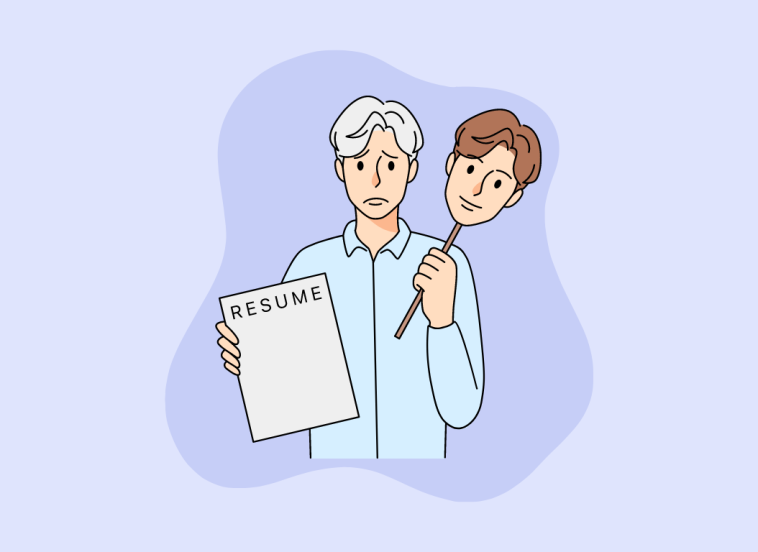On average, adults spend 8.12 hours for work every weekday. For this reason, workplace psychology is an area that cannot be overlooked.
One area that has been receiving attention lately is age discrimination, particularly against older employees.
The increasing number of older employees and perceptions of aging combined are creating a mounting concern that can be defined as ageism in the workplace.
In this article, we aim to provide key insights using psychological research and statistics to reveal the cold hard facts about ageism in the workplace.
Furthermore, after explaining age discrimination in the workplace, we are going to talk about how you can tackle age bias at work as well!
Without further ado, let’s examine ageism in the workplace and then explore its antidotes.
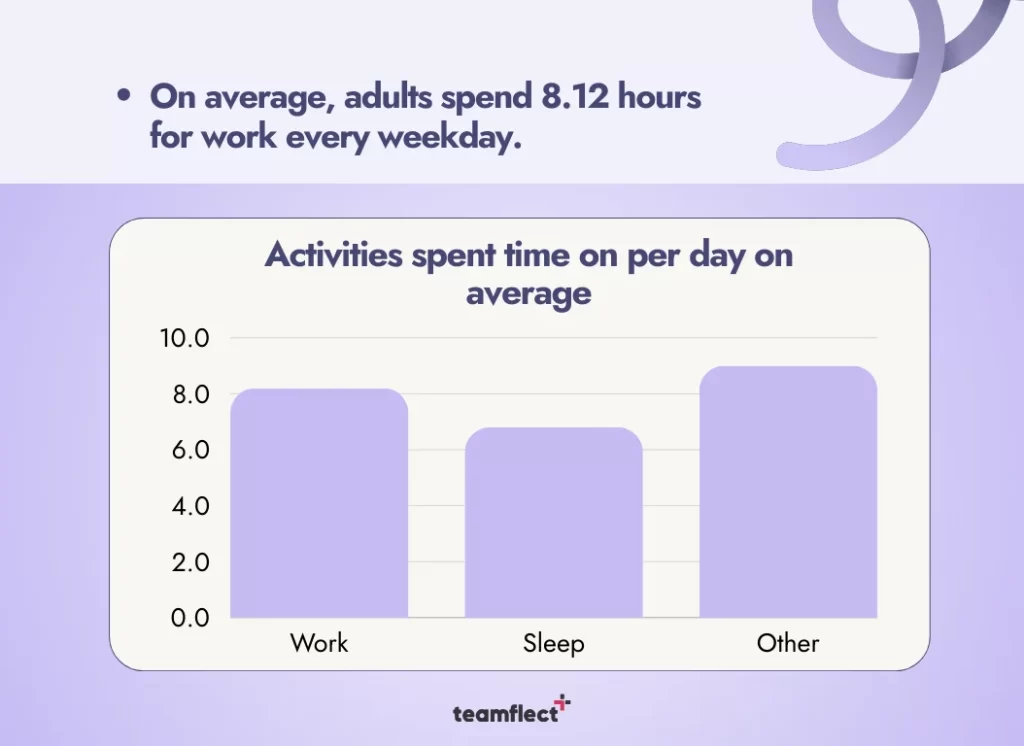
Table of Contents
What is Ageism in the Workplace?
Ageism in the workplace refers to stereotypical beliefs and biases about age.
Age bias more commonly involves discrimination against older employees. However, younger employees, although it’s not as common, can experience ageism as well.
The common stereotypes about older employees include:
- Resistant to learning new approaches.
- They are less healthy as compared with younger workers.
- They are not tech-savvy.
- They can be slower than younger employees, which means that they are less productive.
Let’s also add the stereotypes that younger workers experience to provide a more complete picture:
- Younger employees are lazier.
- They can be less motivated and reliable when it comes to work.
- They can be arrogant.
Examples of Ageism in the Workplace
Below you can find age discrimination examples that can be found in different aspects of work.
Although these ageism examples can be observed in many organizations, it’s hard to challenge these biases and eliminate them toward building a more positive workplace.
Let’s take a closer look at 12 examples of ageism one-by-one to ensure age diversity in your company.
1. Comments or Insults That Target Older People
Although it cannot be exactly qualified as workplace harassment, age-related remarks can indicate a bigger problem at work that needs careful examination.
According to Time, a study by Columbia University reveals that, “Even those oldest boomers not held back professionally because of age may experience something called micro-aggressions, which are ‘brief and commonplace daily verbal, behavioral, and environmental indignities, whether intentional or unintentional, that communicate hostile, derogatory or negative slights and insults to the target person or group.’”
Although it can occur unconsciously, microaggressions can also indicate ageism in the workplace. This unintentional form of prejudice can make employees feel isolated, or even harassed.
A Real Life Example of Ageism in the Workplace
Michelle, who is a 54 year old Pilates instructor at a Massachusetts fitness center, repeatedly experienced age discrimination.
Although she was committed to her job, comments which implied she was overpaid because of her age created a toxic workplace.
Requesting schedule changes from the management led to job termination for her which demonstrates how pervasive ageism in the workplace is.
2. Recruiting Only Younger Employees
According to a report by EEOC, older employees working in tech industry experience higher rates of ageism in the workplace.
70% of employees who work in IT claim that they have either experienced ageism or witnessed it.
Moreover, 40% of older employees who work in tech roles think that their age is a liability.
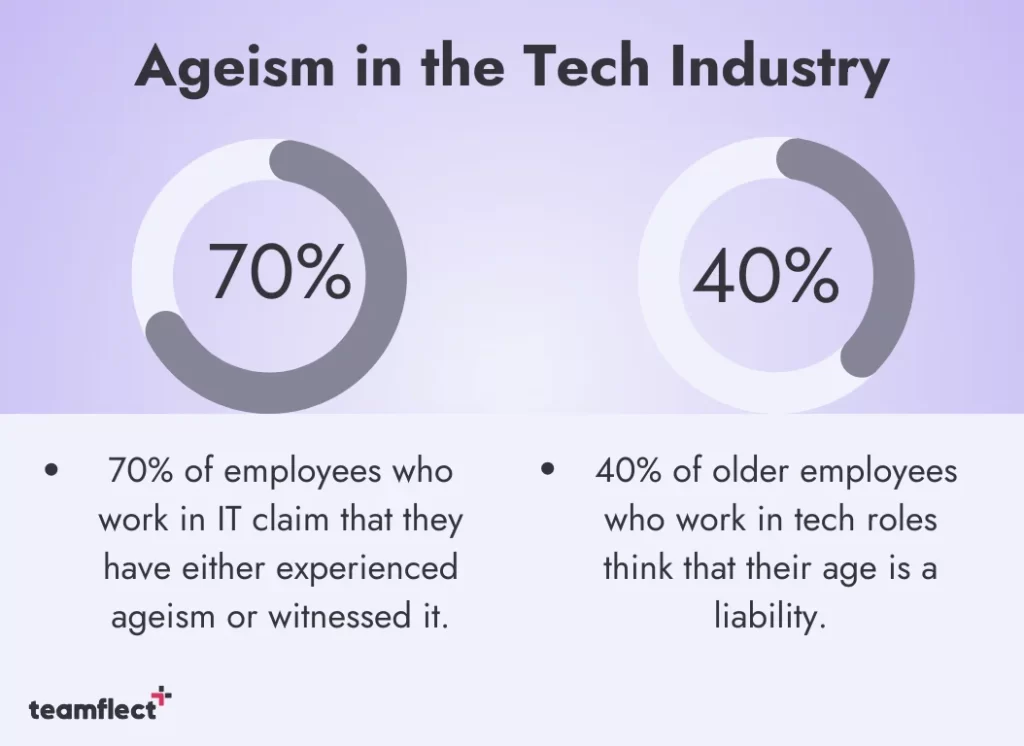
You may be on to something if you can identify a recruitment pattern in your workplace. Most employers specifically seek younger employees due to ageist stereotypes.
If an employer favors younger employees, they may say that the older candidates might be overqualified.
This assumption can stem from the belief that experienced older people may become bored with the tasks that can be done by less experienced employees.
However, not hiring an older candidate because of this assumption is completely unlawful.
A Real Life Example of Ageism in the Workplace
The EEOC claims that last year, Lilly USA, LLC, an Indiana-based pharmaceutical company, broke federal law by purposefully refusing to hire older workers because of their age.
Older employees made up the majority of Lily’s company initially. The corporation purposefully began underhiring more senior candidates and recruiting more millennials to build a more age-balanced workforce.
According to the EEOC, this was against the Age Discrimination in Employment Act.
3. Getting Turned Down for Promotions
Having years of experience in a field and getting turned down for a promotion which winded up going to a younger employee who is less experienced and qualified than an older employee can be a sign of ageism in the workplace.
If this pattern is persistent in an organization, it may be evidence of age bias.
However, it’s worth noting that older employees, even though it’s not as common, can be favored when it comes to job promotions in some organizations.
A Real Life Example of Ageism in the Workplace
Nazir who is a print room manager at a company that provides printing services to law firms experienced age discrimination related to dress code and overtime policies.
He failed when he first attempted to resolve the issues through emails.
Nazir was fired after a disciplinary hearing when several issues were raised, including continuing conflicts and an alleged breakdown in his relationship with the directors.
He attempted to appeal his dismissal but it was unsuccessful. He subsequently filed claims with the Tribunal, one of which was for direct age discrimination, claiming that his older employee status and greater pay were the reason for his termination.
4. Not Receiving Challenging Tasks
One tactic often used by employers that aims to influence older workers to leave their jobs is through lightening their workload or not assigning them with challenging tasks.
Frustration can set in among older employees who are assigned with unsatisfying tasks which can make them feel useless and not valuable in their company.
As a consequence of this, the stereotypical belief that older employees are not as skillful and knowledgeable continues.
A Real Life Example of Ageism in the Workplace
Mr. Gregory, a who was a geophysicist at Petro Trace, was made redundant in August 2021 because of alleged lack of work.
However, it was revealed by prior emails among managers that there had been discussions about hiring younger experts instead of Mr. Gregory.
Mr. Gregory receives a notice of termination that makes no reference of redundancy, and later he receives a notice that cites the downturn in the business as the cause.
When Mr. Gregory brought up concerns about age discrimination in October 2021, the managing director took an aggressive stance.
Although there were hints of performance problems in a draft letter, the investigation found no specific concerns.
The Tribunal determined that Petro Trace was unable to prove redundancy or performance as grounds for termination. The age discrimination argument was supported by the email comments, which showed age-based motivation.
Mr. Gregory received £340,212.80 in recognition of his specialized industry and advanced age. In addition, he received £20,000, which fell in the middle of the Vento bandings, for the long-term impact on his physical and emotional health.
5. Isolating Older Employees
Employers who want to coerce older workers into leaving their jobs may push employees to the sidelines of the organization by isolating them.
They may isolate these employees by excluding them from meetings, not allocating the required resources for them, restricting their access to opportunities, services or common areas, etc.
Employers may even go one step further and ask their older employees to work remotely or they may appoint them to a different physical location which may significantly disrupt their lives.
As a result of the feelings of isolation, employees may experience reluctance to contribute and participate.
A Theoretical Example of Ageism in the Workplace
Rather than firing senior nurses directly, hospital administration chooses to isolate them in order to save money. They begin by putting them on less difficult shifts and excluding them from training sessions.
In addition, senior nurses are transferred to distant departments or locations, which disrupts their routines and damages their sense of belonging.
A nurse, 55-year-old Sarah, observes the change in treatment. She used to actively participate in quality improvement projects and serve as a mentor to newer nurses.
She now feels underappreciated and ignored, which lowers her morale and job satisfaction. She is committed to providing excellent patient care, but her isolation makes her think about quitting earlier than she had intended.
6. Incentivizing Retirement
To push their older employees out, organizations may offer retirement packages. It’s hard for older employees to turn down these incentives usually and if they don’t there is no guarantee that the company won’t fire them.
In a similar way, organizations may enact a mandatory retirement age even though, mandatory retirement is only legal in certain professions like firefighting and law enforcement.
In other words, forced retirement is an involuntary process and it usually occurs during downsizing, restructuring, or as a result of an employee’s health problems.
According to the US law, employees can’t be pushed out of their jobs with forced retirement. However, a 2018 study reveals that 56% of employees aged 50 and older have been forced to leave their jobs before they wish to retire.
A Real Life Example of Ageism in the Workplace
Award-winning sports journalist TJ Simers was employed by the LA Times, which was then owned by Tribune Publishing.
In 2013, he filed a complaint alleging age discrimination when his column was cut from three times a week to twice a year and finally stopped. His columns were being scrutinized more closely than ever before.
Both parties challenged the $7.1 million jury award given to TJ Simers in 2015. In August 2019, TJ Simers’ assertion that it was worth more was proven.
In 2019, a new jury granted TJ Simers a $15.4 million award for emotional and personal suffering.
When interest is taken into account, the claim could be worth an astounding $22 million if Tribune Publishing loses its second appeal.
7. Going Through Layoffs
Layoffs, when they only target older employees, can be a sign of ageism in the workplace. You can prove age discrimination if you notice a pattern like this in your organization.
To avoid legal repercussions, employers may include a small sample of younger employees into the mix of laid off employees.
A Theoretical Example of Ageism in the Workplace
A company announces a round of layoffs at its manufacturing facility as a result of restructuring. But as things progress, it becomes clear that the people being let go are exclusively those over 50.
Sarah, a 55-year-old production supervisor with 30 years of expertise, is one of the people let go. Even in roles comparable to hers, she observes that younger workers with less tenure and experience are kept on team.
The corporation includes a tiny sample of younger workers in the layoffs to minimize legal ramifications, but the majority of the staff is still older.
Sarah chooses to file a lawsuit for age discrimination against the employer after noticing a pattern. She collects proof of the unfair impact on senior employees and demands compensation for ageism-related wrongful termination.
8. They May Eliminate Your Position
One of the common examples of ageism in the workplace is having your role eliminated. You can prove age discrimination in the workplace if your employer eliminates your job but then goes ahead and hires a younger worker.
A Real Life Example of Ageism in the Workplace
The EEOC filed an age discrimination lawsuit against J&M Industries Inc., a US-based manufacturing and distribution company, earlier this year.
The EEOC claims that J&M broke federal law when they let go of an employee due to her age, even though she had turned 65 and refused to retire.
The manager of the employee had asked about her retirement date on multiple occasions. When she replied that she wasn’t retiring, the corporation notified her that her employment was being eliminated because of the uncertain economic climate.
A man in his forties was hired by the corporation less than a month later to fill the position that it had claimed to have eliminated.
9. Being Put On a Performance Improvement Plan
Receiving a performance improvement plan can be a negative sign, especially if you don’t have a history of poor performance which can be easily revealed by examining your performance reviews.
If you suddenly get a performance improvement plan, it may indicate that your organization is trying to find a way to fire you in a “legal” way.
A Theoretical Example of Ageism in the Workplace
John, a senior software developer at his technology company who is 58 years old and has over 20 years of experience, finds himself unexpectedly put on a performance improvement plan.
He has continuously met or exceeded expectations in his performance reviews throughout the years, but he is now informed that he needs to improve his work performance because it is not up to par.
John believes that his sudden PIP is the result of ageism because younger coworkers who perform on the same level or even worse are not subjected to PIPs.
John carefully adheres to the PIP and makes progress, but eventually, his workload is decreased and he is fired under the pretext of “poor performance.”
He feels that because of this event, he has been unfairly singled out and subjected to discrimination because of his age.
10. Stereotyping
Stereotypes about age will more than likely lead to ageism in the workplace. Stereotypes, even when they seem harmless, can turn into bigger problems such as limiting one’s access to opportunities, and unequal treatment.
A Theoretical Example of Ageism in the Workplace
The management team of a marketing company believes that younger workers are more innovative and tech-savvy, and that older workers are outdated and reluctant to change.
As a result, they often give new projects that call for creative digital strategies to their younger team members while ignoring the invaluable knowledge and wisdom of their more senior colleagues.
Older workers are excluded from these chances although they have proven their competency with new technologies because of the misconception that they are less tech-savvy.
These biases feed into an ageist attitude in the workplace and make older workers feel undervalued.
11. Not Receiving Training Opportunities
Employers may assume that older workers are slow to learn and this assumption can lead to a lack of access to learning and development opportunities.
Statistics suggest that older employees are usually overlooked regarding growth opportunities.
According to PIAAC data obtained from OECD countries, 24% of older employees aged 55-65 participate in professional training activities while 41% of employees aged 45-54 participate in training programs.
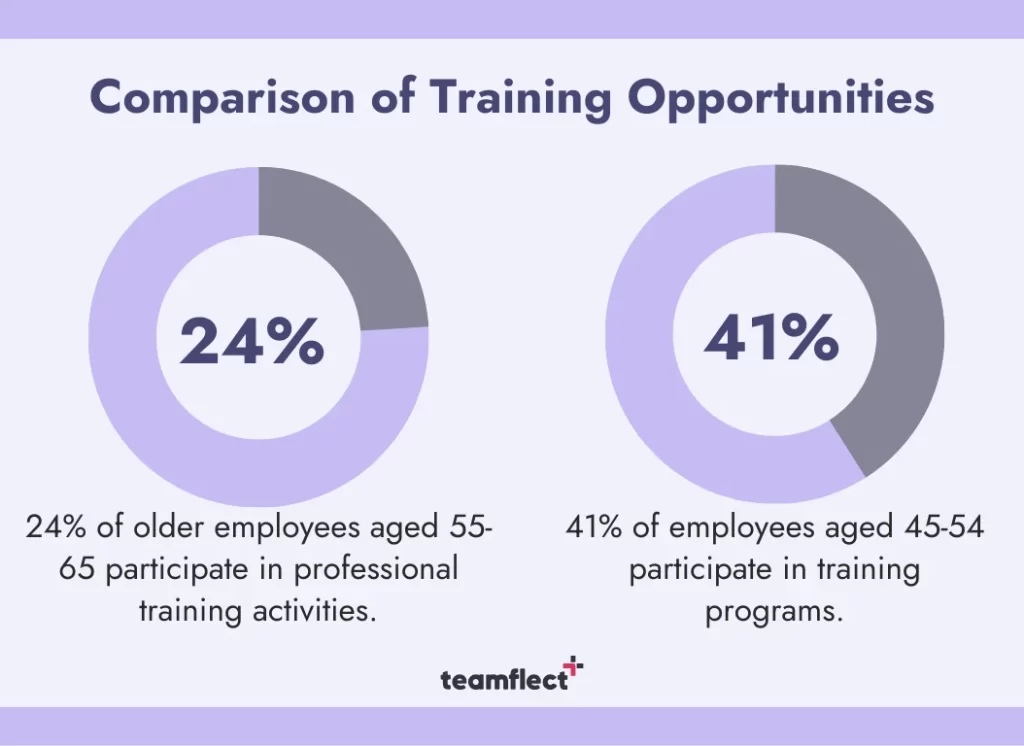
A Real Life Example of Ageism in the Workplace
When it comes to denying older employees training opportunities, ageism is sadly pervasive. CEO of Next-Up and proponent of unretirement Victoria Tomlinson provides an example for this.
Victoria studied the topic of investing in advanced IT skills for the construction industry’s over-50 population in great detail.
However, 87% of respondents did not think that their older workers needed to receive training on these skills, even though these people were in charge of managing and overseeing younger staff members.
12. Unequal Salaries
A different example that reflects reverse ageism in the workplace is receiving unequal pay. Salaries can be determned by seniority rather than performance metrics.
As said previously, younger employees can also experience ageism in the workplace and as a consequence, they may receive salaries unequal to their senior colleagues.
A Real Life Example of Ageism in the Workplace
When a young employee in Northern Ireland turned 18, her small company decided to terminate her rather than raise her salary to the legally mandated national minimum wage amount.
The Industrial Tribunal found that this judgment was discriminatory and was “callous.”
The Impact of Ageism: Challenges in the Modern Workplace
Losing a job, especially later in life, can cause anxiety about a variety of topics, such as housing and family support, as well as financial instability.
Ageism in the workplace worsens these concerns for people over 50.
Even if they are experienced, older people frequently face obstacles while trying to find new jobs.
While experience is important in many occupations, youth is valued more highly in many others than qualifications. Regardless of their experience, older candidates could be viewed as less flexible or tech savvy.
On the other hand, when entry-level jobs require years of previous work experience, younger individuals also endure discrimination because of their inexperience.
As a result, experience becomes a necessary condition for employment, and it creates a vicious cycle that makes it challenging for recent graduates to find employment.
Ageism in the workplace draws attention to structural problems in the labor market, where prejudices towards younger and older workers continue, that makes it difficult for many competent people to find jobs.
- U.S Equal Employment Opportunity Commission (2013) report reveals that ageism at work has been on the rise. According to the report, there is an increase in age discrimination in the workplace from 15.785 in 1997 to 21.396 in 2013.
- The rise in age discrimination cases may have been caused by the growing number of older population. (WHO, 2012)
- Older employees may want to retire later than the age of 65 (retirement age in the US) owing to better health as compared to before. (WHO, 2012)
This leads to a conflict between older and younger employees as younger employees think that their older counterparts are using up the resources like job opportunities.
Moving forward, it has been demonstrated through studies that ageism in the workplace negatively affects job satisfaction, commitment, and employee engagement, while perceived social support from colleagues and superiors can act as a buffer in the context of age discrimination.
How to Ensure a Bias Free Workplace Through Performance Appraisals
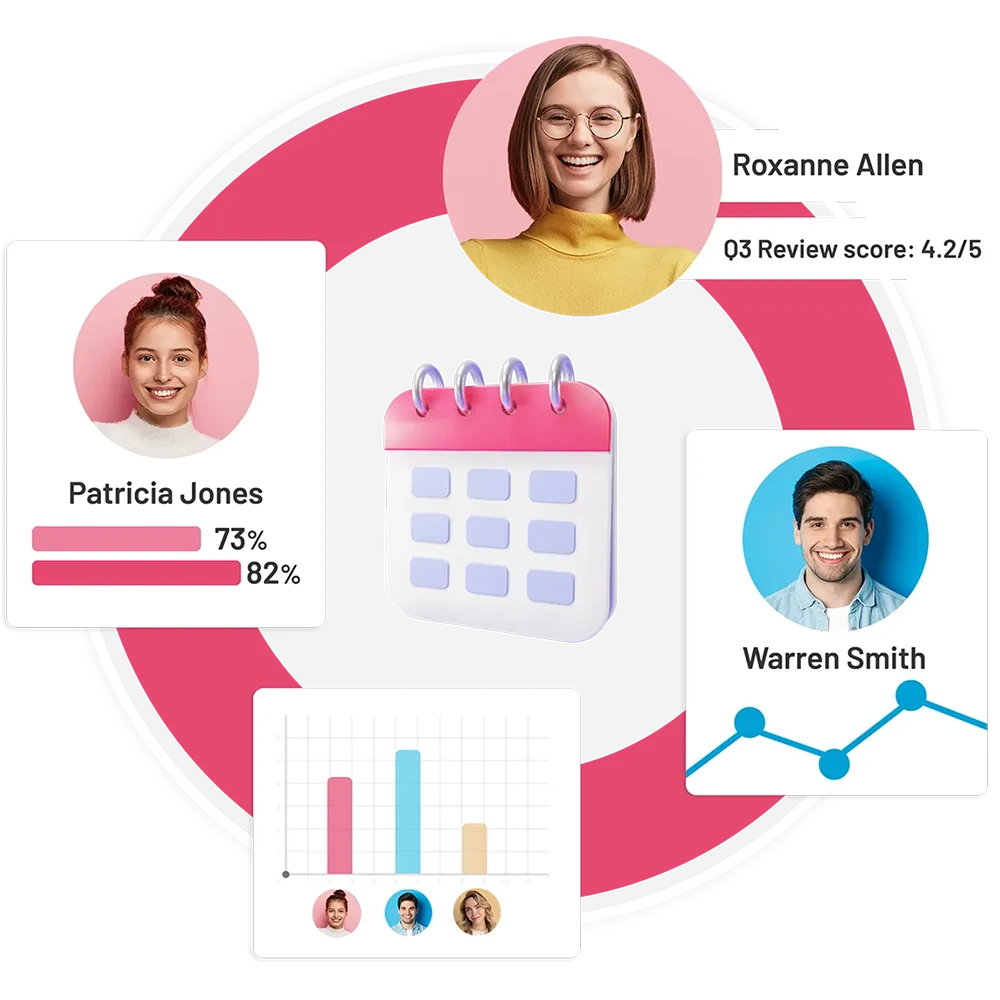
When it comes to ensuring a workplace atmosphere that is free of age bias, your most reliable ally will be performance review software with cutting-edge capabilities.
These capabilities can help you eliminate performance review biases.
Teamflect is one of the most user-friendly and robust performance review software within Microsoft Teams.
You can consistently monitor and measure performance of each employee while identifying areas for improvement and professional growth opportunities with Teamflect.
1. Using Performance Review Templates
- Teamflect offers customizable performance review templates that you can tailor according to your organizational needs.
- The customizability of our templates will allow you to gain accurate and actionable insights into perfomance.
2. Leveraging the Power of Analytics
- Our reports and analytics feature, along with other exceptional features of Teamflect, will allow you to draw insightful conclusions regarding employee performance.
- We leverage Power BI reports which can be used for a single employee or an entire team.
- These reports can allow you to compare performance to make data-driven decisions, identify areas for improvement, and provide recognition for high-performers.
3. Eliminating Biases through 360-degree Feedback
- Another essential feature of Teamflect that helps you create an age bias free workplace is 360-degree feedback.
- The diverse perspectives provided by different employees, will help you conduct fair and accurate performance reviews.



